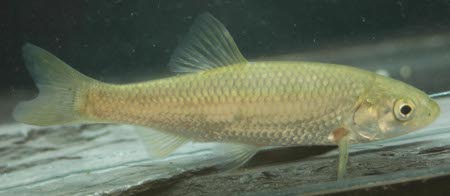 Thousands of fish bred in captivity will be released into the natural environment in various water courses in the West (Torres Vedras) and South of the country (Odemira and Silves), during the months of March and April, in an initiative of the Vasco da Gama Aquarium, from the ISPA and Quercus Biosciences Center.
Thousands of fish bred in captivity will be released into the natural environment in various water courses in the West (Torres Vedras) and South of the country (Odemira and Silves), during the months of March and April, in an initiative of the Vasco da Gama Aquarium, from the ISPA and Quercus Biosciences Center.
This project, which also has as partners the Faculty of Veterinary Medicine of the Technical University of Lisbon, the Municipality of Figueiró dos Vinhos and which had EDP and UNICRE as patrons, has been ongoing since 2008 with the aim of reproducing and maintaining populations ex situ of some of the most endangered species of freshwater fish on the Portuguese mainland in our country, such as the Western redfish (Achondrostoma occidentale), the Portuguese boga (Iberochondrostoma lusitanicum), the Mira scale (Squalius torgalensis), the Arade scale (Squalius aradensis) and, the southwestern bogue (Iberochondrostoma almacai).
The repopulation will be carried out in sections of the rivers of origin (of individuals initially captured for breeding) that present characteristics favorable to the survival and reproduction of the fish.
Whenever possible, these sections are associated with projects, such as the Alcabrichel river and the Torgal stream.
Preferably, the use of these populations is foreseen in actions to repopulate rivers associated with projects for the recovery of water lines, and involving, in interconnection with citizens and entities that locally carry out surveillance, a more or less formal monitoring of the hydrographic basins where the fishes.
The captive breeding project is being developed at ICNF facilities, located in Campelo, municipality of Figueiró dos Vinhos, managed by Quercus, and at the Vasco da Gama Aquarium, in OeirasAlgés.
Invaded and degraded watercourses = species extinction!
National watercourses are today under severe pressure, and many of them are subject to extreme degradation.
The combined effects of urban and industrial discharges of pollutants, which contaminate watercourses with excess nutrients, to which long, dry summers with little rain are added, become devastating for river organisms.
In parallel, the proliferation of invasive plant and animal species (reeds or acacias and perch or crayfish), and poor intervention practices in riverine habitats, also contribute to increasing the risks to which they arise. are subject, in terms of conservation, to freshwater fish species. All of this is putting some species at risk, contributing to their pre-extinction.

















Comments